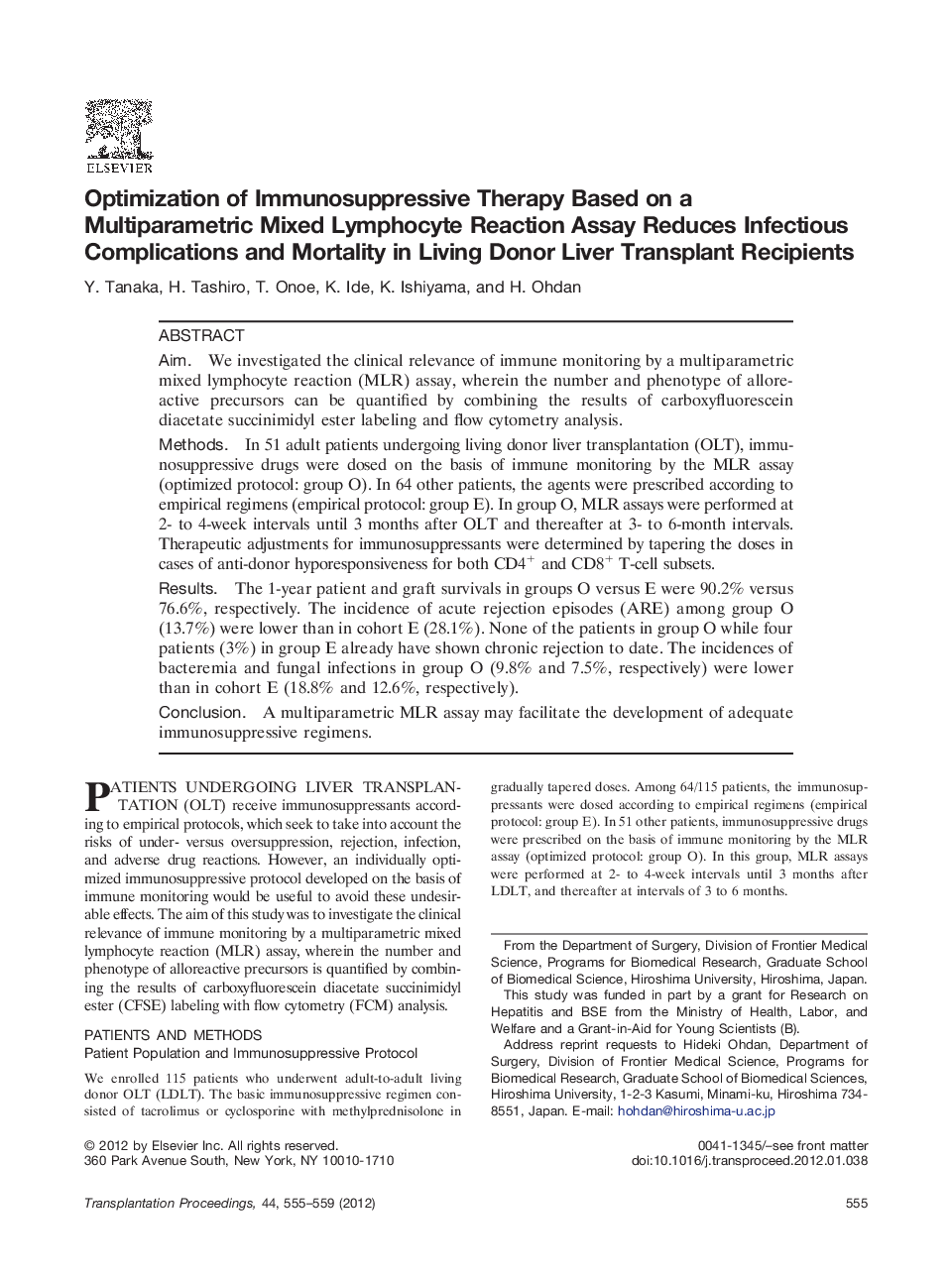| Article ID | Journal | Published Year | Pages | File Type |
|---|---|---|---|---|
| 4260399 | Transplantation Proceedings | 2012 | 5 Pages |
AimWe investigated the clinical relevance of immune monitoring by a multiparametric mixed lymphocyte reaction (MLR) assay, wherein the number and phenotype of alloreactive precursors can be quantified by combining the results of carboxyfluorescein diacetate succinimidyl ester labeling and flow cytometry analysis.MethodsIn 51 adult patients undergoing living donor liver transplantation (OLT), immunosuppressive drugs were dosed on the basis of immune monitoring by the MLR assay (optimized protocol: group O). In 64 other patients, the agents were prescribed according to empirical regimens (empirical protocol: group E). In group O, MLR assays were performed at 2- to 4-week intervals until 3 months after OLT and thereafter at 3- to 6-month intervals. Therapeutic adjustments for immunosuppressants were determined by tapering the doses in cases of anti-donor hyporesponsiveness for both CD4+ and CD8+ T-cell subsets.ResultsThe 1-year patient and graft survivals in groups O versus E were 90.2% versus 76.6%, respectively. The incidence of acute rejection episodes (ARE) among group O (13.7%) were lower than in cohort E (28.1%). None of the patients in group O while four patients (3%) in group E already have shown chronic rejection to date. The incidences of bacteremia and fungal infections in group O (9.8% and 7.5%, respectively) were lower than in cohort E (18.8% and 12.6%, respectively).ConclusionA multiparametric MLR assay may facilitate the development of adequate immunosuppressive regimens.
